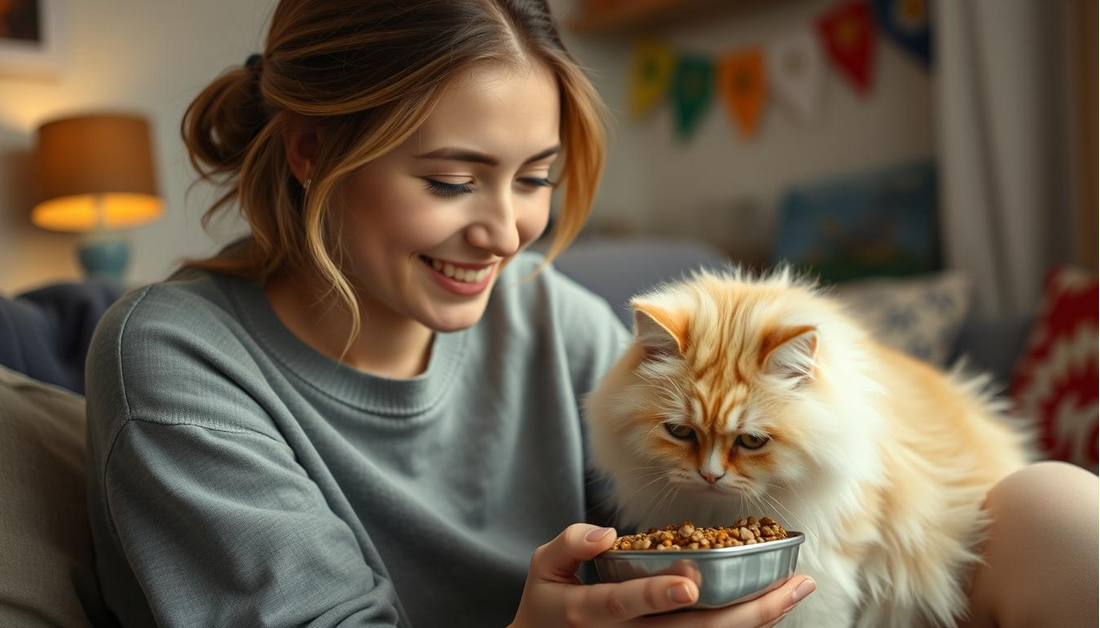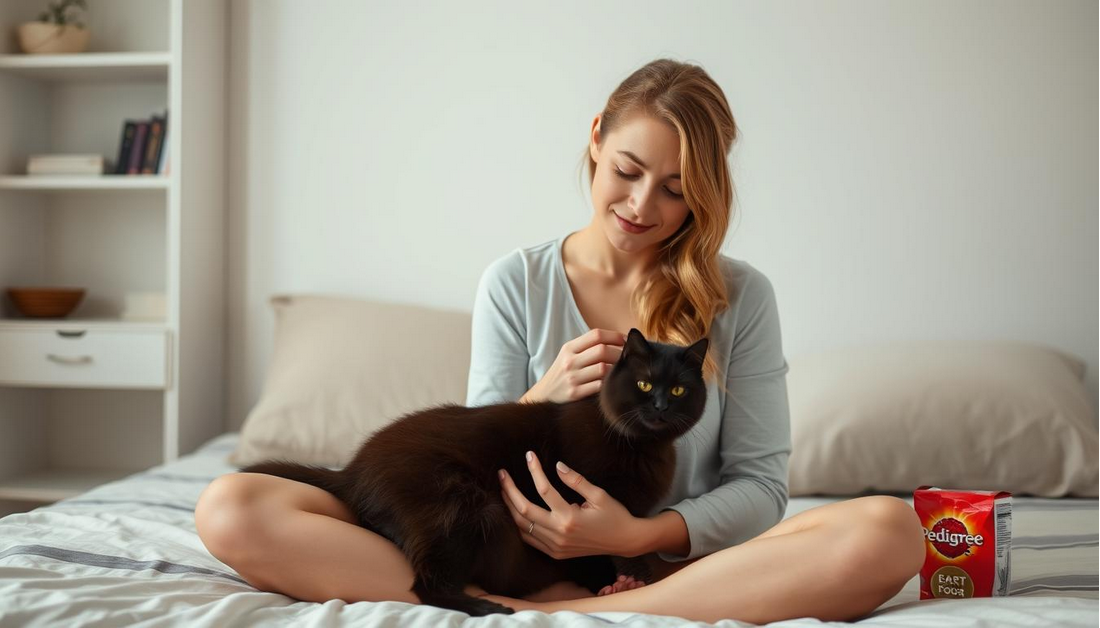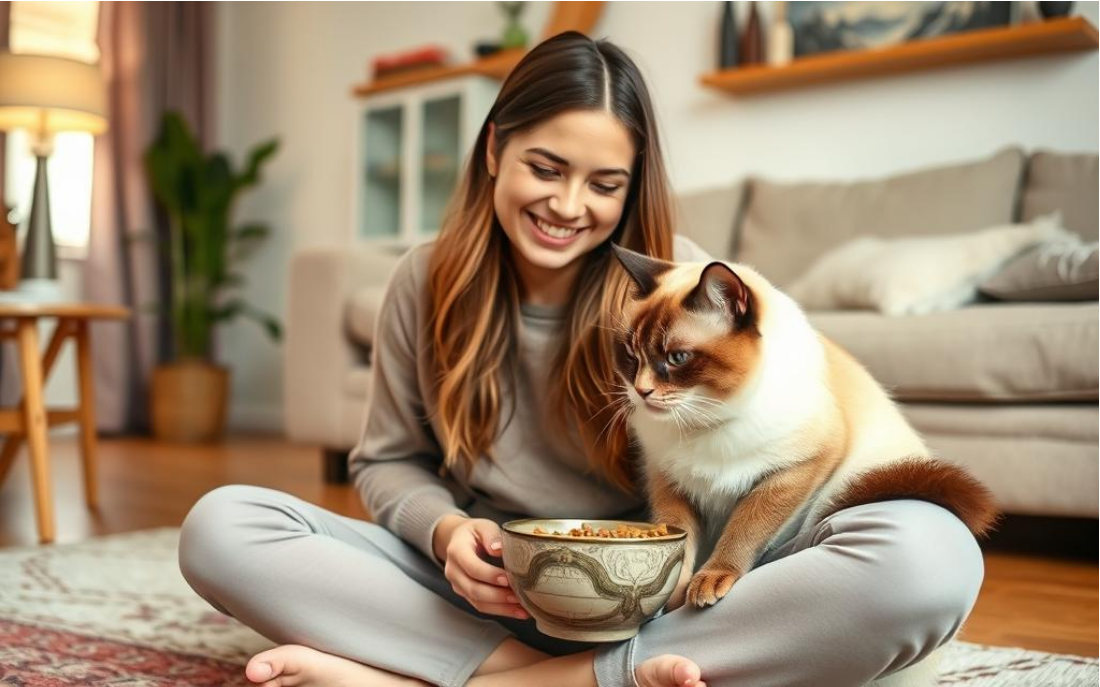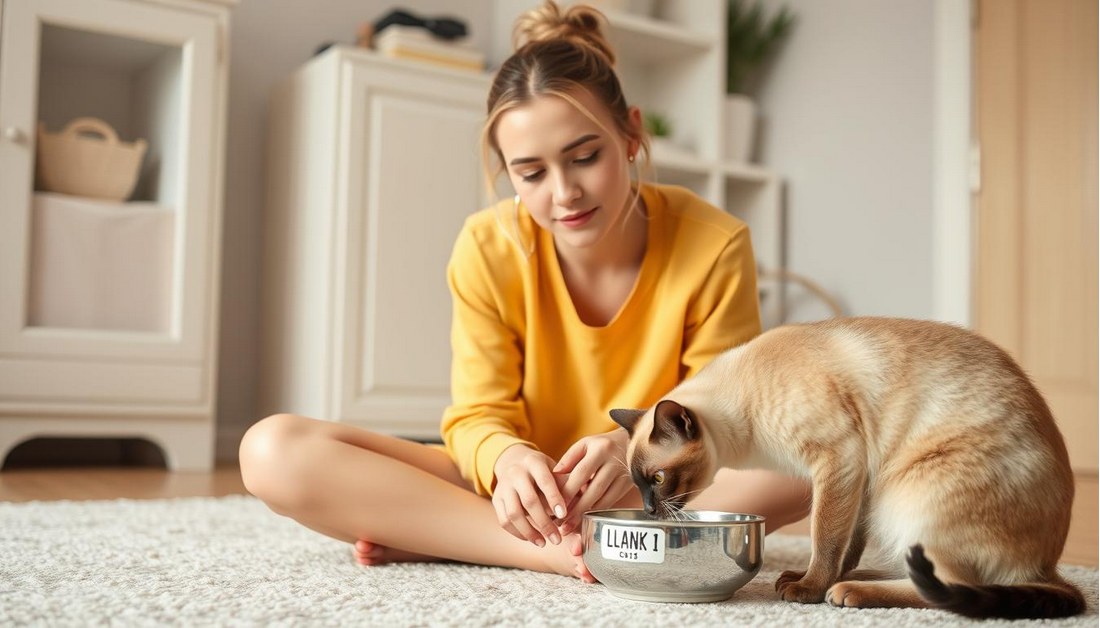India customers to view on amazon.in
“Please note that no animals were harmed in the making of this content.”
Wet vs. Dry Food: Which is best for Cat
As a cat owner, choosing the right cat nutrition is crucial for your pet’s health and wellbeing. The debate between wet and dry cat food has been ongoing, with each side having its own set of advantages.
- Understanding Cat Nutrition Basics
- Essential Nutrients Cats Need
- The Carnivore Diet: What Cats Naturally Eat
- How Domestic Cat Diets Differ from Wild Cats
- The Fundamental Differences Between Wet and Dry Cat Food
- Composition and Ingredients
- Manufacturing Processes
- Moisture Content Comparison
- Typical Nutritional Profiles
- Benefits of Wet Cat Food
- Higher Moisture Content and Hydration
- Protein Quality and Quantity
- Palatability and Taste Appeal
- Lower Carbohydrate Content
- Benefits of Dry Cat Food
- Convenience and Storage Advantages
- Cost-Effectiveness
- Dental Health Benefits
- Caloric Density and Portion Control
- Wet vs. Dry Food: Which is Best for Cat Health Conditions
- Urinary Tract Health
- Kidney Disease Management
- Diabetes and Weight Management
- Dental Disease Considerations
- Age-Specific Considerations
- Kittens: Growth and Development Needs
- Adult Cats: Maintenance Requirements
- Senior Cats: Addressing Aging Challenges
- Special Dietary Needs and Restrictions
- Food Allergies and Sensitivities
- Grain-Free Options in Both Categories
- Prescription Diets: Wet vs. Dry Options
- The Cost Factor: Budget Considerations
- Short-Term vs. Long-Term Expenses
- Premium vs. Budget Options in Both Categories
- Hidden Costs: Health Implications of Poor Nutrition
- Practical Feeding Strategies
- Mixing Wet and Dry Food: The Hybrid Approach
- Feeding Schedules and Portion Control
- Transitioning Between Food Types
- Storage and Freshness Tips
- What Veterinarians and Nutritionists Say
- How to Choose the Right Food for Your Specific Cat
- Assessing Your Cat’s Individual Needs
- Reading and Understanding Cat Food Labels
- Signs Your Cat’s Diet May Need Changing
- Consulting with Veterinary Professionals
- Conclusion: Finding the Right Balance
- FAQ
- Is wet or dry food better for my cat?
- What are the benefits of feeding my cat wet food?
- Can I feed my cat only dry food?
- How can I transition my cat from dry to wet food?
- What are the signs that my cat’s diet needs changing?
- Is it okay to mix wet and dry cat food?
- How do I choose the best cat food for my cat’s specific needs?
- Are grain-free diets better for cats?
- How can I ensure my cat is getting the right amount of food?

The decision largely depends on several factors, including your cat’s age, health, and personal preferences. Cat feeding tips suggest that a balanced diet is key to maintaining your cat’s overall health.
Understanding the differences between wet and dry cat food can help you make an informed decision about the best food for cats.
Key Takeaways
- Choosing the right cat food depends on age, health, and personal preferences.
- A balanced diet is crucial for maintaining your cat’s overall health.
- Understanding the differences between wet and dry cat food is essential.
- Cat feeding tips can guide you in making the right decision.
- The best food for cats provides the necessary nutrients for optimal health.
Understanding Cat Nutrition Basics
To keep your cat healthy, it’s essential to grasp the basics of cat nutrition. Cats are obligate carnivores, meaning they require a diet rich in protein from animal sources. Their nutritional needs are specific and must be met to ensure optimal health.
Essential Nutrients Cats Need
Cats require certain essential nutrients, including taurine, vitamin A, and arachidonic acid, which are found in animal-based ingredients. They also need adequate protein and fat for energy and overall health.

The Carnivore Diet: What Cats Naturally Eat
In the wild, cats consume prey that is high in protein and fat, with minimal carbohydrates. Their diet consists of the flesh, bones, and organs of animals, providing them with the necessary nutrients for survival.
How Domestic Cat Diets Differ from Wild Cats
While domestic cats still require a carnivorous diet, their nutritional needs can be met through a variety of commercial cat foods. However, it’s crucial to choose a diet that closely mimics their natural nutritional intake, with high-quality protein sources and minimal fillers or by-products.
The Fundamental Differences Between Wet and Dry Cat Food
When it comes to choosing the right food for your cat, understanding the fundamental differences between wet and dry cat food is crucial. This knowledge will help you make an informed decision that caters to your cat’s specific needs.
Composition and Ingredients
Wet cat food typically has a higher protein content and is made with more animal-based ingredients, such as chicken or salmon. In contrast, dry cat food often contains a mix of animal and plant-based ingredients, including grains like corn or wheat.
The quality and source of ingredients can significantly impact the nutritional value of the food. Wet cat food usually has fewer preservatives and additives, whereas dry cat food may contain more to extend shelf life.

Manufacturing Processes
The manufacturing process for wet cat food involves cooking the ingredients in large batches, then sealing them in cans or pouches. This method helps retain the food’s natural moisture and flavor.
Dry cat food, on the other hand, is made through a process called extrusion, where the ingredients are mixed, cooked, and then shaped into kibbles. This process allows for a longer shelf life and easier storage.
Moisture Content Comparison
One of the most significant differences between wet and dry cat food is their moisture content. Wet cat food can contain up to 80% moisture, while dry cat food typically has around 10% moisture.
This difference is crucial for cats that have specific hydration needs or are prone to urinary tract issues.
Typical Nutritional Profiles
Both wet and dry cat foods can offer balanced nutrition, but their nutritional profiles differ. Wet cat food often has higher protein levels and fewer carbohydrates, aligning more closely with a cat’s natural diet.
Dry cat food, while sometimes containing more carbohydrates, can still provide all the necessary nutrients for a cat’s health, especially when formulated correctly.
Benefits of Wet Cat Food
Wet cat food offers several benefits that can significantly improve a cat’s overall health and wellbeing. One of the primary advantages is its higher moisture content, which aids in maintaining proper hydration levels in cats.
Higher Moisture Content and Hydration
Cats are naturally inclined to eat prey with high moisture content, making wet food more aligned with their natural diet. Higher moisture content in wet cat food helps in promoting urinary health and reducing the risk of kidney stones.
Protein Quality and Quantity
Wet cat food typically contains higher quality protein sources compared to dry food. These protein sources are more easily digestible by cats, providing them with the necessary amino acids for optimal health. The quantity of protein in wet food is often more suitable for a cat’s carnivorous dietary needs.

Palatability and Taste Appeal
Wet cat food is often more palatable to cats due to its texture and smell. This can be particularly beneficial for cats that are picky eaters or have a decreased appetite.
Lower Carbohydrate Content
Unlike dry cat food, which often contains a significant amount of carbohydrates, wet cat food typically has lower carbohydrate content. This is beneficial for cats, as they have a limited ability to digest carbohydrates.
| Benefit | Description |
|---|---|
| Higher Moisture Content | Aids in hydration and urinary health |
| Protein Quality and Quantity | Provides essential amino acids for optimal health |
| Palatability | More appealing to cats, especially picky eaters |
| Lower Carbohydrate Content | Aligns with a cat’s natural diet, low in carbs |
Benefits of Dry Cat Food
The convenience and health benefits of dry cat food make it a popular choice among cat owners. Dry cat food offers several advantages that cater to both the health needs of cats and the lifestyle needs of their owners.
Convenience and Storage Advantages
Dry cat food is known for its ease of storage and convenience. It can be left out for cats to graze on throughout the day without spoiling, making it ideal for busy pet owners. Its long shelf life means that owners can buy it in bulk, reducing the frequency of trips to the pet store.

Cost-Effectiveness
Generally, dry cat food is more cost-effective than wet cat food. The lower cost per serving makes it an attractive option for many cat owners, especially those with multiple cats.
Dental Health Benefits
Dry cat food can help reduce tartar and plaque on cats’ teeth, promoting better dental health. The abrasive nature of dry kibble helps to clean teeth as cats chew.
Caloric Density and Portion Control
Dry cat food typically has a consistent caloric density, making it easier for owners to manage their cat’s weight and ensure they’re getting the right amount of calories. Portion control is simplified with dry food, as it’s easier to measure out the correct amount.
Overall, dry cat food offers a range of benefits that make it a practical and healthy choice for many cats.
Wet vs. Dry Food: Which is Best for Cat Health Conditions
The choice between wet and dry cat food can significantly impact cats with certain health conditions. Cats suffering from various health issues require a diet that not only meets their nutritional needs but also helps manage their condition.
Urinary Tract Health
Cats prone to urinary tract issues can benefit from the higher moisture content in wet food, which helps to dilute their urine and reduce the risk of stone formation. Wet food can be particularly beneficial for cats with a history of urinary tract problems.
Kidney Disease Management
For cats diagnosed with kidney disease, the type of food they eat can play a crucial role in managing the condition. Wet food is often recommended because of its high moisture content and lower phosphorus levels compared to dry food.
Diabetes and Weight Management
Cats with diabetes or obesity can benefit from the different nutritional profiles of wet and dry foods. Wet food tends to have lower carbohydrate content, which can be advantageous for managing blood sugar levels.
Dental Disease Considerations
Dental health is another critical aspect of cat health. While dry food is often touted as beneficial for reducing tartar and plaque, the evidence is mixed. Some cats may still require dental chews or regular veterinary dental care.

| Health Condition | Wet Food Benefits | Dry Food Benefits |
|---|---|---|
| Urinary Tract Health | Higher moisture content | May help reduce urinary pH |
| Kidney Disease | Lower phosphorus, higher moisture | Can be formulated with reduced protein |
| Diabetes/Weight Management | Lower carbohydrate content | Can help with satiety and weight control |
| Dental Health | Not specifically beneficial | May help reduce tartar and plaque |
In conclusion, the decision between wet and dry food for cats with health conditions should be made based on the specific needs of the cat, potentially with the guidance of a veterinarian.
Age-Specific Considerations
Understanding the age-specific nutritional needs of cats is vital for their overall health and wellbeing. Cats have different dietary requirements at various stages of their lives, from kittens to adult cats and eventually to seniors.
Kittens: Growth and Development Needs
Kittens require a diet rich in protein and calories to support their rapid growth and development. A nutrient-dense food that includes essential vitamins and minerals is crucial during this stage. Kittens need a higher caloric intake per pound of body weight compared to adult cats.
Adult Cats: Maintenance Requirements
Adult cats require a balanced diet that maintains their overall health. The nutritional needs at this stage focus on maintenance rather than growth. Adult cat food should be formulated to prevent obesity and ensure they receive the necessary nutrients for optimal health.

Senior Cats: Addressing Aging Challenges
Senior cats often face aging challenges such as weight loss, decreased mobility, and potential kidney disease. Their diet should be adjusted to address these issues, typically requiring fewer calories but more easily digestible nutrients. Senior cat food is formulated to support joint health and may include antioxidants to combat aging.
By understanding and catering to the age-specific nutritional needs of cats, owners can significantly impact their pets’ health and longevity.
Special Dietary Needs and Restrictions
Some cats have specific dietary requirements due to allergies, sensitivities, or health conditions, making the choice between wet and dry food crucial. Cats with these special needs require a diet that is tailored to their condition to ensure optimal health.
Food Allergies and Sensitivities
Cats can develop allergies or sensitivities to certain ingredients in their food, which can lead to skin problems, digestive issues, or other health concerns. Identifying and managing these allergies is crucial. Both wet and dry cat foods come in hypoallergenic formulas that can help alleviate these issues. For instance, some cat foods use novel protein sources like venison or duck, reducing the likelihood of an allergic reaction.

Grain-Free Options in Both Categories
Grain-free diets have become popular for cats, especially those with sensitivities. Both wet and dry cat foods offer grain-free options, using alternative carbohydrate sources like potatoes or peas. It’s essential to choose a grain-free option that is well-balanced and meets your cat’s nutritional needs. When selecting a grain-free food, ensure it is labeled as “complete and balanced” by a recognized animal nutrition organization.
Prescription Diets: Wet vs. Dry Options
For cats with specific health conditions, veterinarians often recommend prescription diets. These diets are available in both wet and dry forms and are formulated to manage conditions such as kidney disease, urinary tract health, or obesity. Prescription diets are tailored to the cat’s particular health needs, and the choice between wet and dry can depend on the cat’s preferences, health status, and the veterinarian’s recommendations.
In conclusion, cats with special dietary needs or restrictions require careful consideration and the right choice of food can significantly impact their health and wellbeing.
The Cost Factor: Budget Considerations
Understanding the cost implications of wet versus dry cat food is essential for making an informed decision that aligns with your budget and your cat’s nutritional needs.
Short-Term vs. Long-Term Expenses
When considering the cost of cat food, it’s crucial to differentiate between short-term and long-term expenses. Initially, wet cat food might seem more expensive than dry cat food. However, the long-term health benefits of feeding your cat a balanced diet could result in lower veterinary bills.
- Wet cat food: Higher upfront cost but potential long-term savings on health issues.
- Dry cat food: Lower initial cost but possible increased veterinary expenses due to related health issues.
Premium vs. Budget Options in Both Categories
The market offers a range of cat food options, from budget-friendly to premium brands, in both wet and dry categories. While budget options are tempting, they often contain lower-quality ingredients that can impact your cat’s health.
Premium cat foodmay offer better nutritional value, potentially reducing health-related costs in the long run.
Hidden Costs: Health Implications of Poor Nutrition
Poor nutrition can lead to various health issues, including obesity, diabetes, and urinary tract problems. These conditions not only affect your cat’s quality of life but also result in significant veterinary expenses.

By choosing a high-quality cat food that meets your cat’s nutritional needs, you can potentially mitigate these hidden costs and ensure a healthier, happier pet.
Practical Feeding Strategies
Implementing the right feeding strategies is crucial for maintaining your cat’s overall health and wellbeing. A well-thought-out approach to feeding can significantly impact your cat’s quality of life, ensuring they receive the necessary nutrients for optimal health.
Mixing Wet and Dry Food: The Hybrid Approach
Combining wet and dry food can provide a balanced diet for your cat. The hybrid approach allows you to leverage the benefits of both types. Wet food offers higher moisture content and can be more palatable, while dry food provides convenience and dental benefits.
A common strategy is to serve wet food as the main meal and supplement with dry food throughout the day. This method can help maintain your cat’s hydration and provide a feeling of fullness.
Feeding Schedules and Portion Control
Establishing a consistent feeding schedule is vital for maintaining your cat’s health. It helps regulate their metabolism and prevents overeating. Portion control is equally important, as it ensures your cat is receiving the right amount of calories.
To implement effective portion control, measure your cat’s food using a measuring cup, and avoid free-feeding. The amount of food your cat needs can depend on their age, size, and activity level.
| Cat’s Life Stage | Recommended Daily Feeding Amount | Feeding Frequency |
|---|---|---|
| Kitten | 3-4% of body weight | 3-4 times a day |
| Adult | 2-3% of body weight | 2 times a day |
| Senior | 1.5-2% of body weight | 2 times a day |
Transitioning Between Food Types
When transitioning between food types, it’s essential to do so gradually to prevent digestive upset. Start by mixing a small amount of the new food with their current food, gradually increasing the proportion over 7-10 days.
Monitoring your cat’s response to the new food is crucial. Look for signs of digestive tolerance, such as normal stool quality and absence of vomiting.
Storage and Freshness Tips
Proper storage of cat food is crucial for maintaining its freshness and nutritional value. Store dry food in a cool, dry place, and keep it in an airtight container to prevent moisture from entering.
For wet food, store unopened cans in a cool, dry place. Once opened, refrigerate any unused portion and use within a few days. Always check the expiration dates and look for signs of spoilage before serving.
What Veterinarians and Nutritionists Say
Expert opinions from veterinarians and animal nutritionists provide crucial guidance for cat owners navigating the complex world of cat nutrition. Their insights are invaluable in making informed decisions about the best diet for their pets.
Current Scientific Research
Recent studies have highlighted the importance of diet in maintaining feline health. For instance, research has shown that cats fed with high-moisture food tend to have better urinary tract health compared to those on dry food diets. Veterinarians often recommend wet food for cats with urinary issues, based on such scientific evidence.
Expert Recommendations
Nutritionists and veterinarians alike stress the importance of a balanced diet tailored to the cat’s life stage and health status. High-quality protein sources and limited carbohydrates are commonly recommended. Many experts suggest a mixed feeding approach, combining both wet and dry food, to leverage the benefits of each.
Debunking Common Myths
There’s a common myth that cats can thrive on dry food alone. However, many veterinarians argue that dry food lacks sufficient moisture, potentially leading to dehydration in cats if not balanced with wet food or adequate water intake. Another myth is that grain-free diets are always better, whereas some cats may not require grain-free options and could benefit from certain grains.
By considering the advice of veterinarians and nutritionists, cat owners can make more informed decisions about their cat’s diet, ultimately contributing to their overall health and well-being.
How to Choose the Right Food for Your Specific Cat
Every cat is unique, and finding the perfect food involves understanding their individual characteristics and needs. Selecting the right cat food can significantly impact your cat’s health, happiness, and longevity.
Assessing Your Cat’s Individual Needs
To choose the right food, you must first assess your cat’s age, health status, lifestyle, and personal preferences. For instance, kittens require more protein and calories compared to adult cats, while senior cats may need food that supports joint health.
Consider factors such as your cat’s activity level, any food allergies or sensitivities, and whether they have specific dietary needs, such as grain-free or high-moisture content.
Reading and Understanding Cat Food Labels
Understanding cat food labels is crucial in making an informed decision. Look for foods that list high-quality protein sources as the first ingredient and avoid products with excessive fillers or by-products.
Check the label for the nutritional adequacy statement, which indicates whether the food meets the nutritional levels established by the AAFCO or NRC.
Signs Your Cat’s Diet May Need Changing
Monitor your cat for signs that their diet may need adjustment, such as weight gain or loss, digestive issues, or changes in coat condition. If your cat seems lethargic or has a dull coat, it might be time to reassess their food.
Consulting with Veterinary Professionals
Your veterinarian is a valuable resource in choosing the right food for your cat. They can provide personalized recommendations based on your cat’s health status and specific needs.
Consulting with a veterinary professional can help you navigate the complex world of cat nutrition and ensure that your cat receives the best possible diet.
Conclusion: Finding the Right Balance
Choosing the right cat food is a crucial decision that impacts your cat’s overall health and well-being. Throughout this article, we’ve explored the fundamental differences between wet and dry cat food, their benefits, and the factors to consider when making a cat food choice.
Understanding your cat’s nutritional needs is key to making an informed decision. Whether you opt for wet, dry, or a combination of both, finding the right balance is essential. Consider your cat’s age, health conditions, and individual needs when selecting a food type.
By assessing your cat’s specific requirements and consulting with veterinary professionals, you can make a cat food choice that meets their nutritional needs. Ultimately, the right cat food will contribute to a long, healthy, and happy life for your feline companion.
FAQ
Is wet or dry food better for my cat?
The choice between wet and dry food depends on your cat’s individual needs, health status, and personal preferences. Both types have their benefits and drawbacks.
What are the benefits of feeding my cat wet food?
Wet food offers higher moisture content, which can aid in hydration, and typically has higher protein quality and lower carbohydrate content, making it a good option for cats with certain health conditions.
Can I feed my cat only dry food?
While it’s possible to feed your cat only dry food, it’s essential to ensure that the dry food is nutrient-rich and meets your cat’s dietary needs. Some cats may require the additional moisture that wet food provides.
How can I transition my cat from dry to wet food?
To transition your cat from dry to wet food, start by mixing a small amount of wet food with their dry food and gradually increase the proportion of wet food over time.
What are the signs that my cat’s diet needs changing?
Signs that your cat’s diet may need changing include weight loss or gain, digestive issues, skin problems, or a decrease in overall health and well-being.
Is it okay to mix wet and dry cat food?
Yes, mixing wet and dry cat food can be a great way to provide your cat with a varied diet and combine the benefits of both types. This hybrid approach can help keep mealtime interesting and ensure your cat is getting a broad range of nutrients.
How do I choose the best cat food for my cat’s specific needs?
To choose the best cat food, consider your cat’s age, health status, and lifestyle. Consult with your veterinarian to determine the most suitable diet, and read labels carefully to ensure the food meets your cat’s nutritional requirements.
Are grain-free diets better for cats?
Grain-free diets can be beneficial for cats with food sensitivities or allergies, but it’s crucial to choose a grain-free food that is well-balanced and meets your cat’s nutritional needs.
How can I ensure my cat is getting the right amount of food?
To ensure your cat is getting the right amount of food, follow the feeding guidelines on the cat food label, and adjust as needed based on your cat’s individual needs and activity level. Consult with your veterinarian for personalized feeding recommendations.







